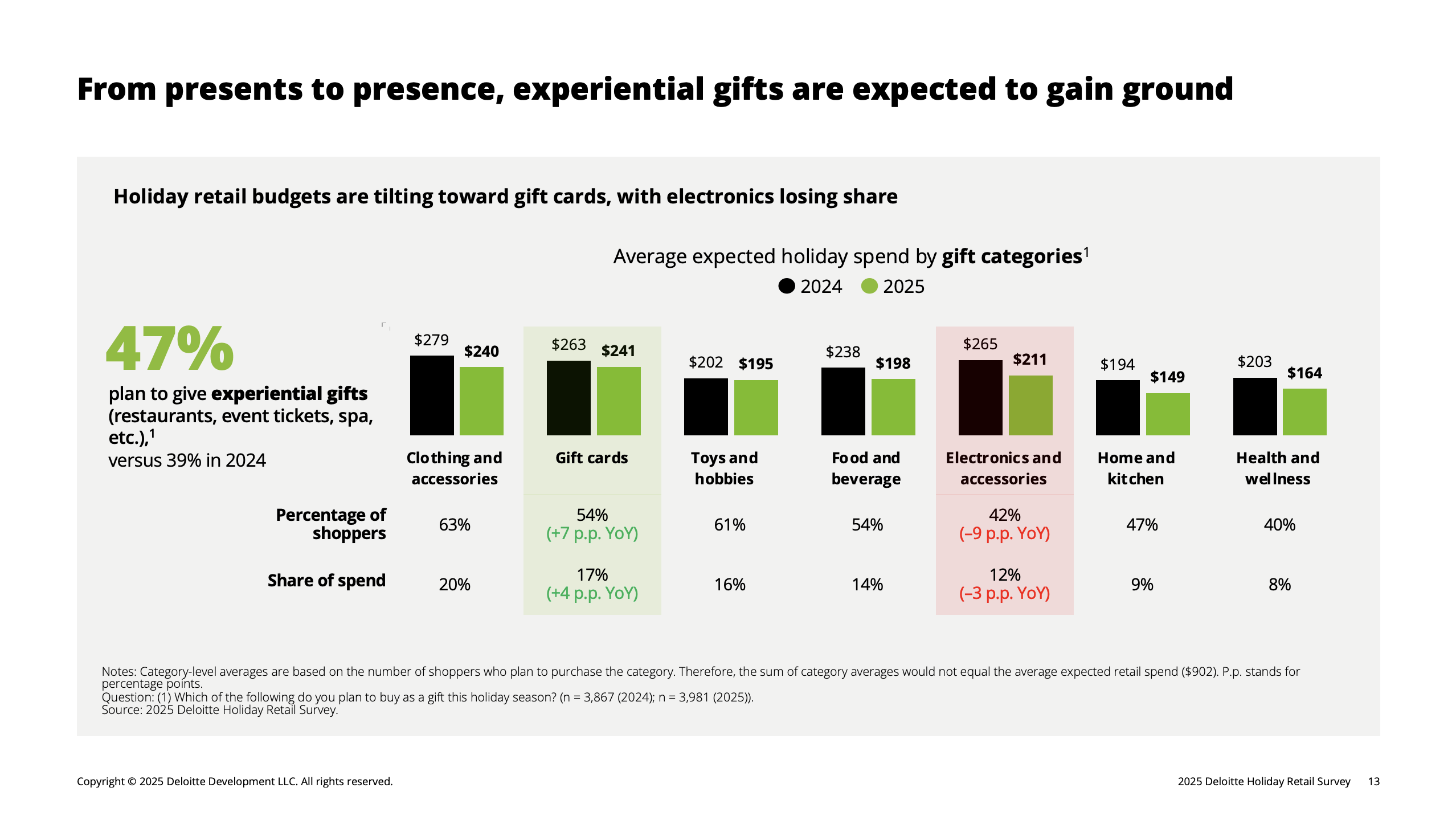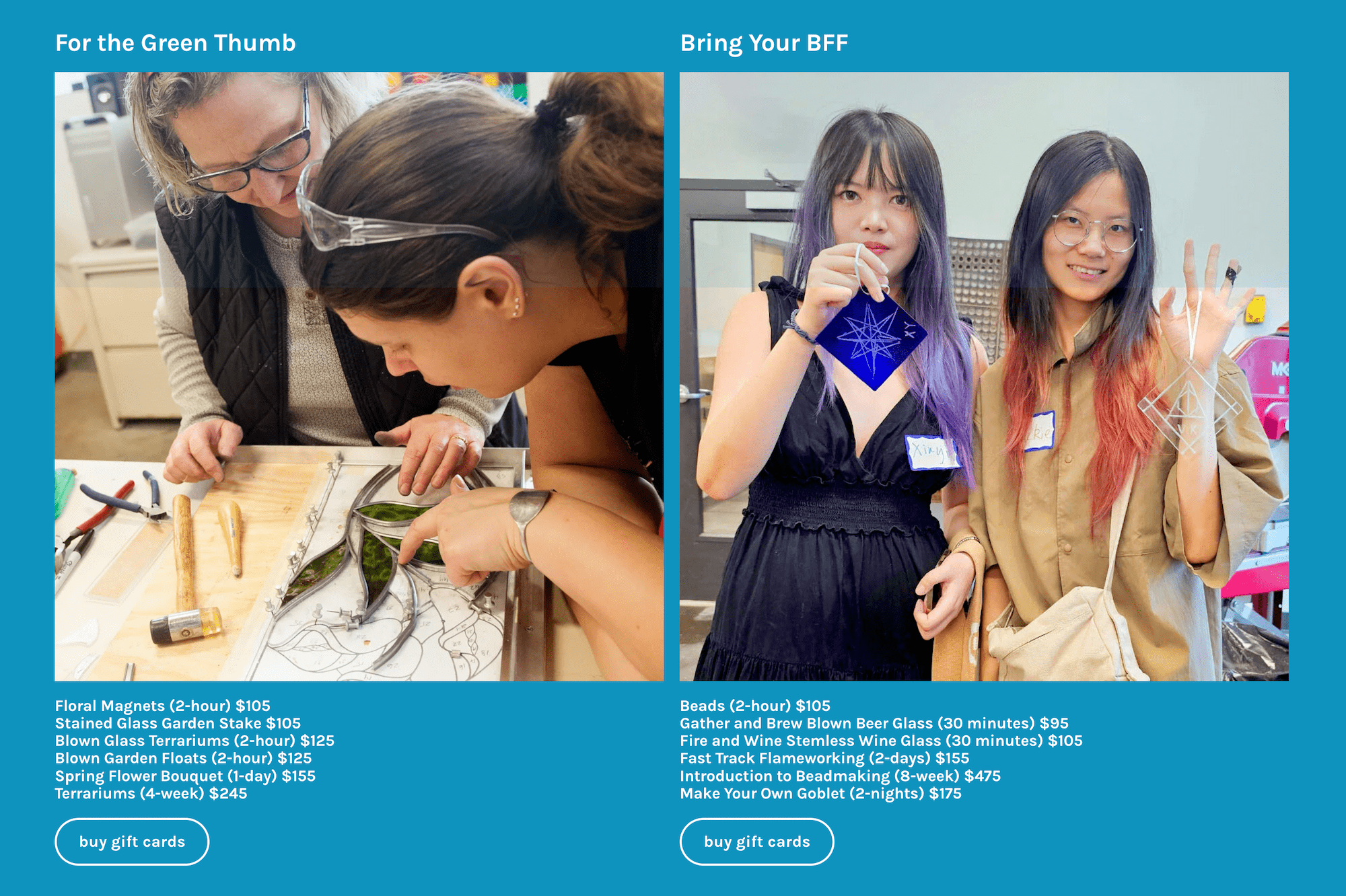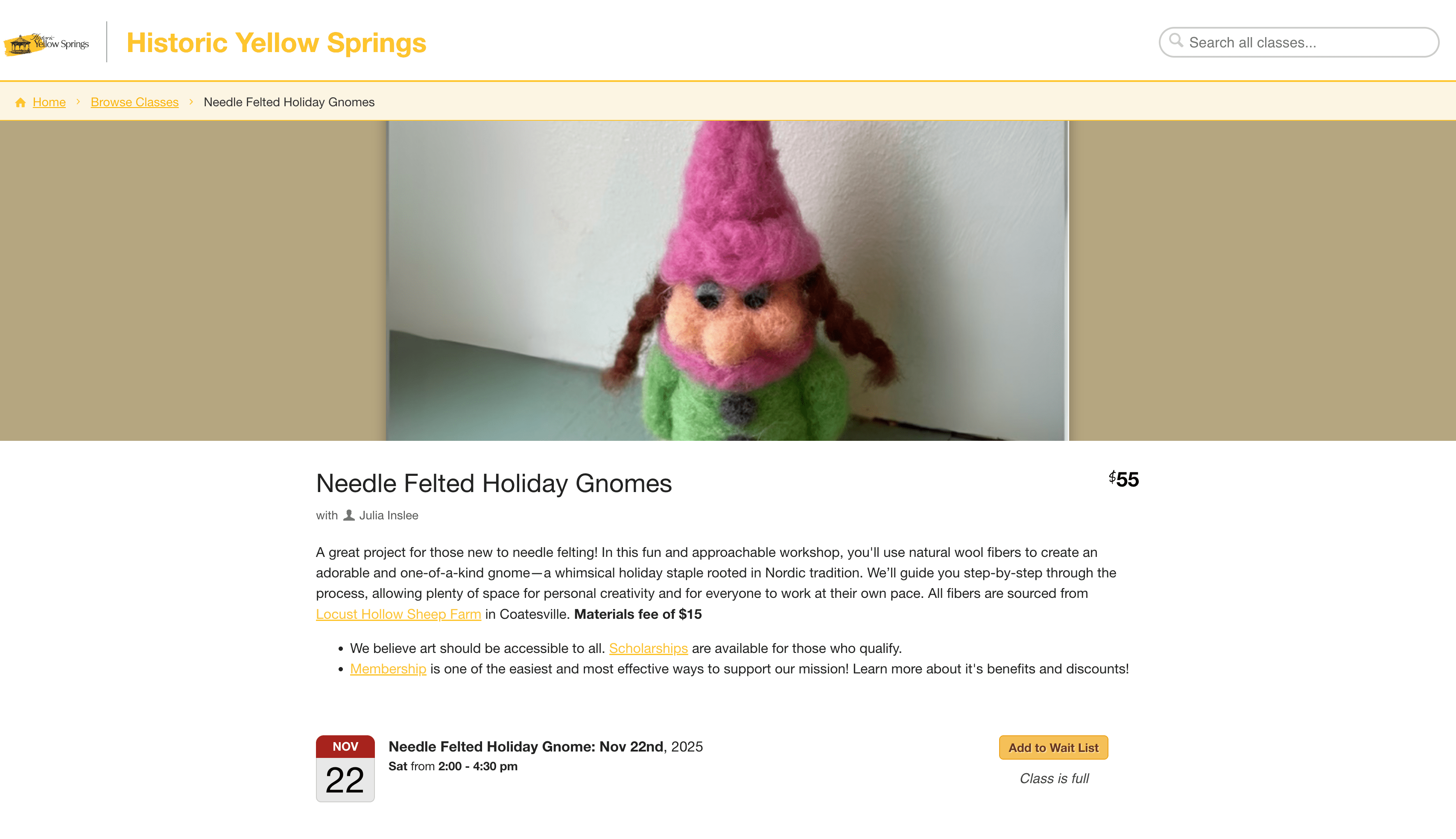The 2025 Holiday Marketing Guide for Arts Organizations



Across the country, families are searching for creative ways to give and gather this holiday season. Deloitte’s 2025 Holiday Retail Survey found that nearly half of shoppers plan to give experiential gifts this year, and almost as many say they’ll make gifts themselves.

For arts and culture organizations, this creates a golden window for holiday marketing. From seasonal workshops to winter markets, arts spaces offer the kind of hands-on experiences people want most right now.
Still, marketing during this time of year can feel daunting. The Deloitte survey also found that shoppers are starting earlier than ever, and most of their spending will happen between late November and early December. It’s a tight window, and if you’re already juggling program delivery, year-end reports, and next-season planning, it can feel like one more thing on an already full plate.
Shoppers are starting early this year, with most spending happening between late November and early December.
This guide is for you. Inside, you’ll find five timely strategies, drawn from real arts organizations and marketing experts, to help you capture attention this season and turn holiday curiosity into lasting engagement.
1. Package your Classes as Giftable Experiences
What do you get the person on your list who has everything? An activity. A class, workshop, or creative outing can become a gift that lives on in the memories it creates.
Gift cards and certificates turn your classes into ready-to-give offers. At Pittsburgh Glass Center, buyers can pick up a gift card in-store or purchase one online for instant delivery to a recipient’s inbox. Their website even helps shoppers choose the right amount, from $25 “Make-It-Now” sessions to $275 glassblowing days.

The Des Moines Community Playhouse takes a similar approach with flexible gift certificates, delivered via mail or email, redeemable for anything from youth classes to mainstage tickets.
Try a few of these approaches to make your own programs gift-ready:
- Give customers multiple ways to buy and redeem gift cards. Offer both digital and physical options for convenience, and allow redemption across programs so recipients can explore your organization on their own terms.
- Group classes by theme or price range. Pittsburgh Glass Center does this brilliantly with categories like “For the Foodie,” “Bring Your BFF,” and “For Kids & Teens.” The structure makes buying simple, even for someone unfamiliar with their programs.
- Add a “Gift this Class” button or note to your listings. Some buyers may not immediately see classes as gifts, so a clear visual cue helps them make that connection.
- Elevate the presentation. A printable certificate, branded envelope, or small keepsake makes the gift feel more personal.
2. Program Short, Seasonal Workshops That Fit Busy Holiday Schedules
The holidays don’t leave much room for long commitments. People want festive programming they can squeeze in between shopping trips, school breaks, and family plans. That’s where short, themed workshops shine.
At Historic Yellow Springs, seasonal holiday art classes like “Needle-Felted Holiday Gnomes” capture that spirit. Participants spend an afternoon creating art, sipping cocoa, and leaving with a handmade piece to display or gift.

Springfield Little Theatre’s School’s Out Workshops do the same for families. These full-day “play-in-a-day” sessions keep kids active and give parents a creative childcare option when school’s closed.
Here’s how to design your own short, seasonal sessions:
- Create one to two-session winter workshops. Quick, approachable formats appeal to beginners and families who can’t commit to multi-week classes.
- Include timely keywords. Terms like “Winter,” “Holiday,” or “New Year” make your listings feel more relevant and help audiences find them faster through search or social media.
- Keep registration simple. Include materials and clearly outline pickup or completion details so people have all the necessary information upfront.
- Build urgency. Limited seats or seasonal themes like ornament making encourage faster decisions, keeping classes full during a season when attention spans are short.
3. Host Open Houses and Pop-Up Events to Drive Discovery
Few things spark curiosity like an open door. During the holidays, open houses and pop-up events give people a firsthand feel for your organization, which can encourage them to register for a class or return later. They also give your community a tangible way to support local creativity.
This year, U.S. consumers are predicted to spend approximately $109 billion at small businesses, which accounts for roughly 41% of their planned holiday spending. Community markets and winter showcases are a timely way to highlight your students’ and artists’ work.
At North Bennet Street School, the annual Open House and Winter Market draws visitors with student demos, behind-the-scenes tours, and handmade goods for sale. It’s equal parts celebration and recruitment, making it an easy entry point for new learners.
At Virginia’s ARTfactory, the Christmas Market Spectacular transforms classrooms and galleries into a bustling marketplace. Students who register for holiday workshops before the event earn vouchers to spend at the market, blending education and community commerce in one clever holiday marketing move.

A few simple adjustments can help your events turn visitors into future students:
- Host free or low-cost “make-and-take” events. A short, tactile project gives guests a feel for your classes and a keepsake they can show off or gift later.
- Pair open houses with markets or performances. Cross-promotion attracts both shoppers and future students, boosting foot traffic and exposure.
- Capture attendee info for future outreach. A quick QR sign-up or tablet form helps you grow your contact list for future classes and campaigns.
- Offer same-day sign-up perks. Early-bird rates or priority access to a popular class nudge visitors to take the next step while excitement is high.
4. Optimize Your Listings for Search and Large Language Models
Even the best classes can go unnoticed if people (or search algorithms) can’t find them. Google has long been a starting point for discovery, but that’s changing fast. According to the Deloitte 2025 Holiday Retail Survey, 33% of shoppers plan to use generative AI in their holiday shopping journey, which is more than double last year’s figure.
As families search for gift ideas and things to do around the holidays, using the right keywords, content structure, and language can help your listings appear in both search results and AI recommendations.
In a recent blog post, arts marketing consultancy Capacity Interactive notes that many arts organizations rely heavily on urgency or last-minute messaging in their holiday marketing like, “Don’t miss out,” or “Final chance.” However, benefits-driven language tends to perform better. Focus on what participants gain (e.g., quality time, creative expression, learning a new skill) to speak to what families are really looking for this season.
Benefits-driven language tends to perform better than urgency and last-minute messaging when it comes to LLMs. Focus on what participants gain.
Here’s how to make your listings stand out:
- Pair the outcome with the medium. “Make Your Own Blown Glass Ornament” is stronger than “Glass Ornament Workshop.”
- Lead with the value. Start your description with what’s in it for them: “Create a keepsake together in this beginner-friendly session.”
- Structure the key details. Use short bullets for materials, duration, and pickup dates. These are easy for families to skim and search engines to index.
- Include familiar search terms. Phrases like “family holiday activity” paired with your city name will help your classes match common searches and appear in local results.
5. Extend Your Campaigns Beyond December
Families are still looking for ways to spend time together during the quieter days between the winter holidays and early January. According to a Meta survey, 41% of consumers say their shopping continues after the holiday season. And last year, Google searches for “family things to do” peaked after Christmas.
Keeping your marketing campaigns active beyond December helps you stay visible while competitors go quiet. You’ll reach families looking for last-minute activities, gift certificate holders ready to redeem, and new audiences planning their New Year routines. The key is to treat this window as an extension of your season rather than the end of it.
Make the most of the post-holiday period with these tips:
- Keep ads and listings live until New Years. Many people have more time, and less noise competing for their attention, after Christmas.
- Focus on the post-holiday lull. Promote family workshops, intro-level classes, or short intensives as ways to recharge or reconnect after the holidays.
- Lean into storytelling. Testimonials, photos, and quotes from the holiday season can fuel your January social posts and newsletters and keep your programs visible.
- Re-engage gift recipients. Send a quick “What to Try First” email featuring two or three upcoming classes that fit the season, plus a direct registration link.
Take the Next Step in Your Holiday Marketing
It’s easy to get swept up in the holiday rush and lose sight of what this season is really about: connection. The classes, events, and workshops you offer give families a way to spend time together and make lasting memories.
Start small this week. Refresh a class description, plan a short winter workshop, or add a “Gift This Class” note to your January catalog. Small steps now can make a big difference when the season gets busy.
Want more content like this post? Subscribe to the CourseStorm newsletter for tips, tricks, and strategies sourced from our community of 700+ arts and community education organizations and delivered to your inbox monthly.
Save time and grow your impact with CourseStorm










